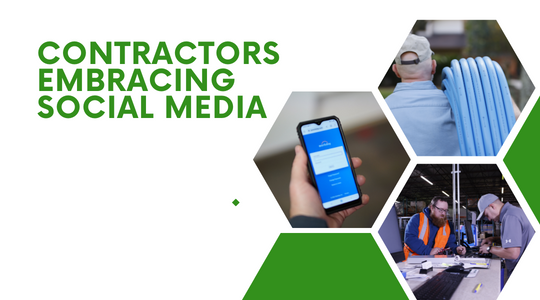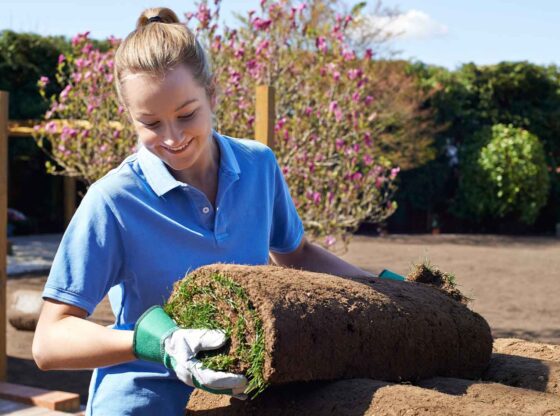What an odd season. Late start to the summer, rainy, and cooler temperatures. Now I hear people talking about an early fall. Well, I hope not!
Now that school is starting back up we enter the fall mindset. Although, there is still a lot of business for the Green Industry to get done. Here’s some topics being bounced around the industry.
What’s Housing Doing?
The Green Industry is deeply affected by what is happening with single family housing. On the positive side, housing starts, sales, and prices have been increasing nationally. On the slightly negative side, the health of housing is regional with a few regions booming while most others are growing slowly.
The National Association of Home Builders tracks 350 metro areas for their Leading Markets Index. Of the 350 metros, 56 have returned to or exceed their pre-recession highs. The 56 metros are where you’d expect. They are in the prosperous parts of the country where politics, favorable business environments, and or oil/gas are creating booms. Here in the Midwest, we did not fall as far and we’re slower in climbing back up. But, we are consisting growing.
Another indicator is that home ownership gradually climbed from 1995 to a high in 2004. If you track the growth of the Green Industry with home ownership you’ll see we had the same growth line.
Since 2004 home ownership has gradually fallen. According to the Commerce Department, we are presently at the same levels as in 1995. And, the Green Industry follows in teh same suite. However, the Green Industry suffered a sudden fall during 08 recession unlike the gradual reduction of home ownership.
So what’s it mean for us in the Midwest? Unless something serious happens, we will continue our slow growth. What you’ve seen is what to expect.
Landscape Turf Wars
Dry areas of the nation are suffering from a long developing water shortage. Not so much for us. We’re surrounded by water and suffer more from water damage instead of shortages. In the areas with shortage, we’re seeing a battle of ideas about how to reduce water use.
Turf elimination is one of those battles. The widely accepted idea that turf grass is a water waster has caused many cities and states to encourage the removal of turf grass from the landscape. The Metro Water District of Southern California pays $2 per square foot to landowners to remove turf grass! Other cities have programs too. But, turf grass believers are firing back.
What are the benefits of turf grass?
Property value increases with turf grass. Homes with native plant lawns, fake turf, and other non-turf lawns actually suffer in resale value. A good landscape with natural turf will repay the investment up to 200%.
Turf Grass attracts buyers. A home with a nice landscape and natural turf lawns gets much more positive attention from home buyers.
Natural turf is an excellent ground cover. Relatively easy to grow, turf grass virtually eliminated run-off. It inhibits the growth of weeds and enriches the soil.
Turf grass cools the environment. It is said the cooling value of 8 typical front lawns is equal to the air conditioning of 20 homes. Turf makes for a cooler more enjoyable place to be. Also, it adds a lot of oxygen to the atmosphere and adsorbs a large amount of noise.
People Like Turf Grass
So, people do like turf grass. People don’t like weed patches, gravel, or fake turf as much. The idea that turf is a water waster comes from poor irrigation systems. Irrigation systems with Distribution Uniformity (DU) have poor watering cycles and waste water. We in the industry have been our own worst enemy in helping create and support bad irrigation systems and bad irrigation system use.
We have to fix ourselves to help stop governments from banning our product. There is good news, the manufacturers have the product and the price really isn’t much more. Now it’s up to distribution and contractors to embrace it. This sadly has been a slow process.
Good DU systems with Smart Control make it easy to maintain healthy turf with minimal water investment. Even in our region, this is an easy sell because such systems also translate to saved money for the property owner. A win-win-win scenario that is unbeatable.
Landscape and Property Maintenance Services Poorly Ranked
The Consumer Federation of America and the North American Consumer Protection Investigators did a top 10 list by business types generating the most consumer complaints.
Green Industry companies were lumped in with home improvement, which scored number 2 on the list! Only auto dealers beat us out. This is not good. The main reasons given were shoddy work and failure to get jobs done.
What’s the Future of Your Business?
There have been several articles in industry magazines as of late concerning the future of landscape businesses. In particular, how aging owners are going to retire.
Many of the larger landscape companies have ownership in their 50’s and 60’s. These folks have lived through the challenging (and exciting) start-up phase and at least 3 tiring recessions. After clawing their way back after the ‘08 recession, which was much deeper than previous downturns, several owners are looking ahead 5 or so years and planning their exits.
Some are not happy with the value their company will command. Most landscape companies depend on the owner being there every day to run and do the business. Owners find themselves enslaved by the business with no good way out.
The situation is typical for small business in general. The owner spends their life working in the business instead of on the business. Without a management team and standardized operating procedures, the business will not function well if the owner is absent.
Nor will such a company command much more than the value of equipment and facilities at time of sale. Far less than what is needed for a long retirement.
The owner can still be OK if they were good at investing money earned over the years into a retirement vehicle. In that case he can sell for whatever he can get or simply liquidate and close up shop.
Retirement for an Owner
The concept of what retirement is must be evaluated. Can an owner own the business but have others run it? In addition, can new ownership be transitioned into over several years? Also, should ownership be gifted to family?
If not, then selling the enterprise is the likely option. Positioning for a sale means something very different than where most landscape companies are today. It takes many years to position a company for a high value sale.
It comes down to having a business that can operate just fine without the owner being there, generates a high EBITDA (cash flow/ net profit), and has a sound formula for long term success.
If selling is the end game goal then;
Have a Strategic Plan
Just the words are a little scary for many small business owners. But a strategic plan is real simple. In fact almost everyone has the building blocks in their mind. Every city has business organizations or groups that can help with strategic planning at a reasonable cost.
Strategic plans can take a few forms. The one you use to procure business loans or investments will be larger and more detailed. The one you need to guide your business development can fit on one piece of paper.
A Strategic plan answers the questions;
- Where are you going?
- How are you going to get there?
- Who does what?
Build a Good Cash Generating Machine
Three types of buyers will buy a business. Investment firms, who seek to buy in, increase the value, then sell for profit 5 years later. Or strategic buyers, who are already in the business and looking to expand, or new owners who want to get into the business.
An investment buyer will want a fully functioning business that will run itself under their guidance. The current owner may continue running the operation or he may be gone and his management team is led by a president seated by the investment firm. Only the big landscapers really have that option.
Strategic buyers may be looking for more geography, talent, or services to add into their current business.
New owners are looking for a profitable business they can step in and grow.
In any case, cash generation is the manner they will value the company. That number is usually handled by EBITDA. Which is most affected by the net profit the business earns. Which means, to get a higher valuation, you have to show several years of making good profits.
Consult with people knowledgeable in selling companies to help determine your model to accomplish a good EBITDA number.
Clean Out the Clutter
Get rid of junk. Junk can be physical stuff piled around the office and property, or it can be under performing segments of your business, processes and operating standards that slow progress, or people who really don’t add to the value of the business.
Make the company as streamlined and “clean” as you can. Buyers doing due diligence must be able to rapidly understand your company and its culture. Clutter gets in their way and scares them.
Build a Good Team
Most any buyer will place higher value on a good team of people. So helping everyone on your team become better and self-reliant is a wise investment. Having a management structure that can run the operation without the owner present is golden.
Build a Strong Customer Base
All buyers want to buy an ongoing enterprise, which means they want customers. Can’t have net profit without customers! Earn more customers and build as much loyalty with them as you can.
Those who pay good dollar to buy a company need to see all of the above. Otherwise all they are buying is a handful of customers, some old equipment and assets, and a pile of dubious inventory.












